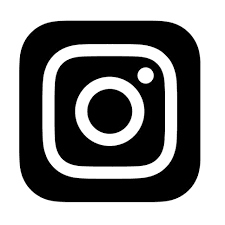Diagnosis
Doctors Who Treat Sjögren’s
Talk to your health care provider if you experience dry eyes and/or dry mouth for more than three months and have other commonly associated Sjögren’s-type symptoms. Rheumatologists usually have primary responsibilities for managing Sjögren’s patients. Eye care practitioners (optometrists or ophthalmologists), dentists, or ear, nose and throat specialists (otolaryngologists) are usually the first to detect Sjögren’s and can treat the site-specific symptoms. It is recommended that patients see their rheumatologist, eye care and dental care providers every 6 months to monitor symptoms and potential complications.
Is Sjögren’s Easily Diagnosed?
NO! Sjögren’s is often misdiagnosed and frequently goes undetected. In fact, on average it may take up to 5 years to be diagnosed. There is still a general lack of awareness about Sjögren’s among health care providers. Patients often don’t look sick. Symptoms may fluctuate and vary greatly from one patient to another. While some people experience mild discomfort, others suffer debilitating symptoms that greatly impair their quality of life. Undiagnosed patients consult several specialists about Sjögren’s-type symptoms not knowing these symptoms are connected by a common disease. Sjögren’s can mimic other diseases such as rheumatoid arthritis, lupus, multiple sclerosis or fibromyalgia, further complicating diagnosis. Early diagnosis and proper treatment is essential to prevent serious complications associated with Sjögren’s.
Diagnosing Sjögren’s
Your doctor will begin with a complete health history and physical examination to assess your symptoms and degree of organ involvement. Even if you do not have dryness symptoms, you may still have Sjögren’s. An international consensus of rheumatologists has identified the following classification criteria to provide a framework for diagnostic testing. A score of 4 or higher confirms Sjögren’s but not all patients will meet these criteria. The gold standard for diagnosis still remains your doctor’s expert opinion.
| Classification Criteria | Score |
|---|---|
| Lip biopsy: focus score ≥1 | 3 |
| Positive SS-A antibody blood test | 3 |
| Eye staining score ≥5 or van Bijsterveld score ≥4 in at least one eye | 1 |
| Schirmer Test: ≤5 mm/5 min in at least one eye | 1 |
| Unstimulated salivary flow: flow rate ≤0.1 mL/min | 1 |
Descriptions of Diagnostic Tests
Blood Test
A blood test is used to identify antibodies which confirm autoimmunity and Sjögren’s:
- SS-A (or Ro) Antibodies: Found in 70% of Sjögren’s patients. SS-A is the only blood marker that is used in the classification criteria.
- SS-B (or La) Antibodies: Found in 40% of Sjögren’s patients
- ANA (Anti-Nuclear Antibody): Found in 70% of Sjögren’s patients and those with other autoimmune diseases.
- RF (Rheumatoid Factor): Found in 60-70% of Sjögren’s patients and those with other autoimmune diseases.
Eye Tests
The following eye tests are conducted by an optometrist or ophthalmologist:
- Schirmer test: The Schirmer test estimates the flow of tears from the lacrimal glands. This test is done by placing thin strips of filter paper on the lower lid of each eye and waiting five minutes. If the amount of the tears secreted on to the paper strip is less than or equal to 5mm in at least one eye, it confirms a dry eye.
- Ocular Staining Score: Yellow fluorescein dye is instilled into the eyes and with the use of a bio-microscope or slit lamp and a blue light, the amount of staining on the cornea or clear part of the eye is given a score. The staining dye tests are used to estimate how many abnormal cells or dry spots there are on the surface of the eyes that are exposed when your eyes are open. A score of 5 or more indicates dry eye disease.
- Van Bijsterveld Score: Rose Bengal or lissamine green dyes may also be used to observe abnormal cells on the surface of the eye. After the dye is instilled, a white light is used to count the number of dry spots in the conjunctiva (the mucus membrane that covers the white of the eye) and graded. A score of 4 or more is considered to be a dry eye.
Oral Tests
The most used tests to confirm Sjögren’s and dry mouth (xerostomia) are the Salivary Flow Test and a Lip Biopsy. Other tests such as salivary scintigraphy (nuclear medicine), sialography (x-ray), and ultrasounds may also be useful to evaluate salivary gland functioning.
-
Salivary Flow Test: A Salivary Flow Test measures the amount of saliva produced over a certain period of time, typically 15 minutes. The most accurate way to do this is to collect unstimulated saliva in a cup. Patients are considered to have a dry mouth if they produce .1 ml of saliva per minute or less.
- Lip Biopsy: A lip biopsy provides tissue that will help to confirm the diagnosis of Sjögren’s. The biopsy looks for signs of inflammation and cells that respond to inflammation which build up within a minor salivary gland. An Oral Medicine specialist, ENT, or other experienced dentist or doctor performs the biopsy in an out-patient setting using a local anesthesia. A small incision is made inside the lower lip, less than half an inch long, and around 4 of these minor glands (that are about the size of a peppercorn) are removed. The site is usually closed with a couple stitches and the procedure is over within 10-15 minutes. The tissue is then observed through a microscope by a knowledgeable pathologist, who determines the presence or absence of inflammation (lymphocytic infiltration) in the glands. The pathological changes found in Sjögren’s include a FOCAL infiltrate of lymphocytes that may eventually result in the replacement of glandular tissue. A focus score of 1 or more confirms Sjögren’s and is used in combination with other diagnostic criteria.


